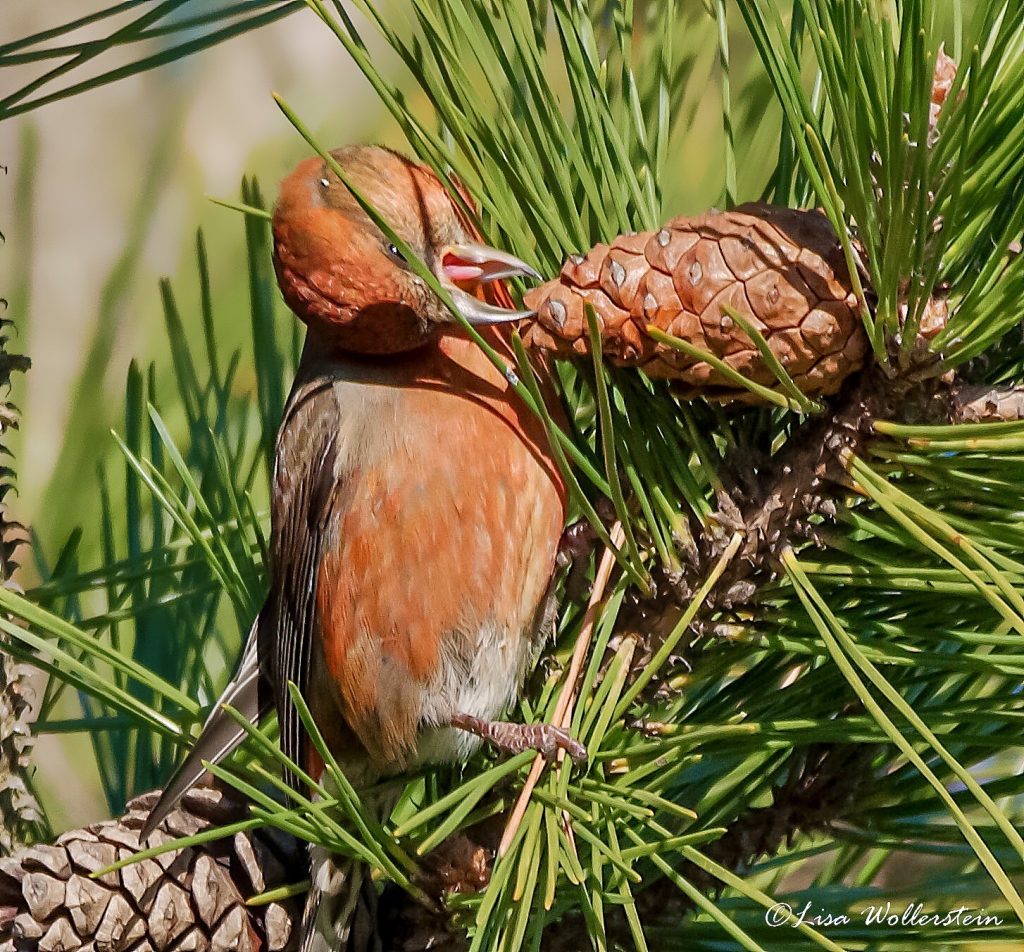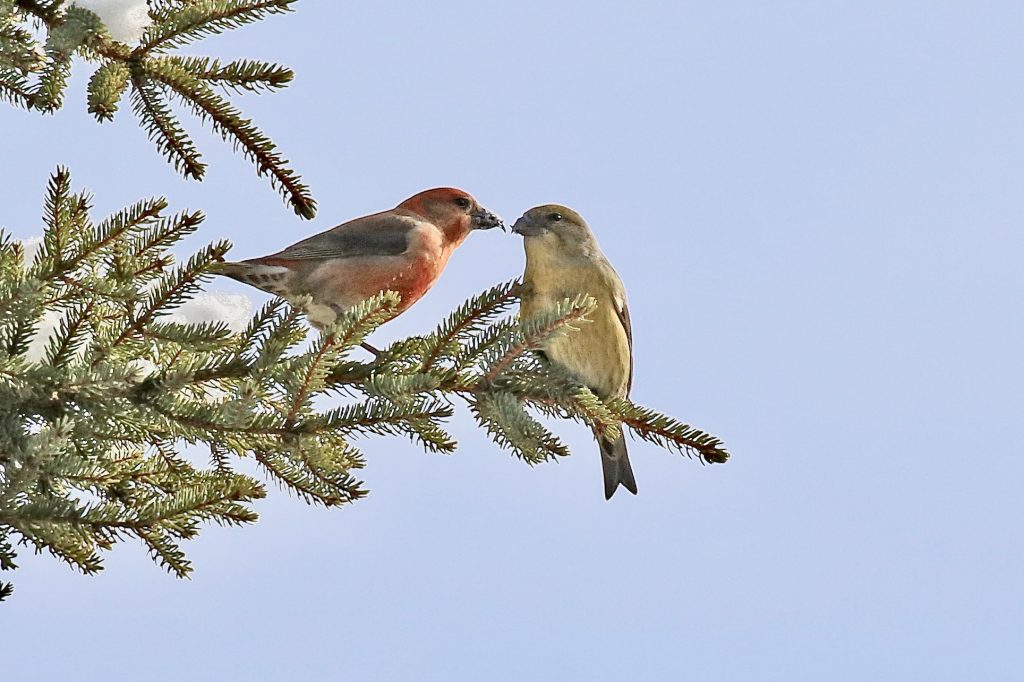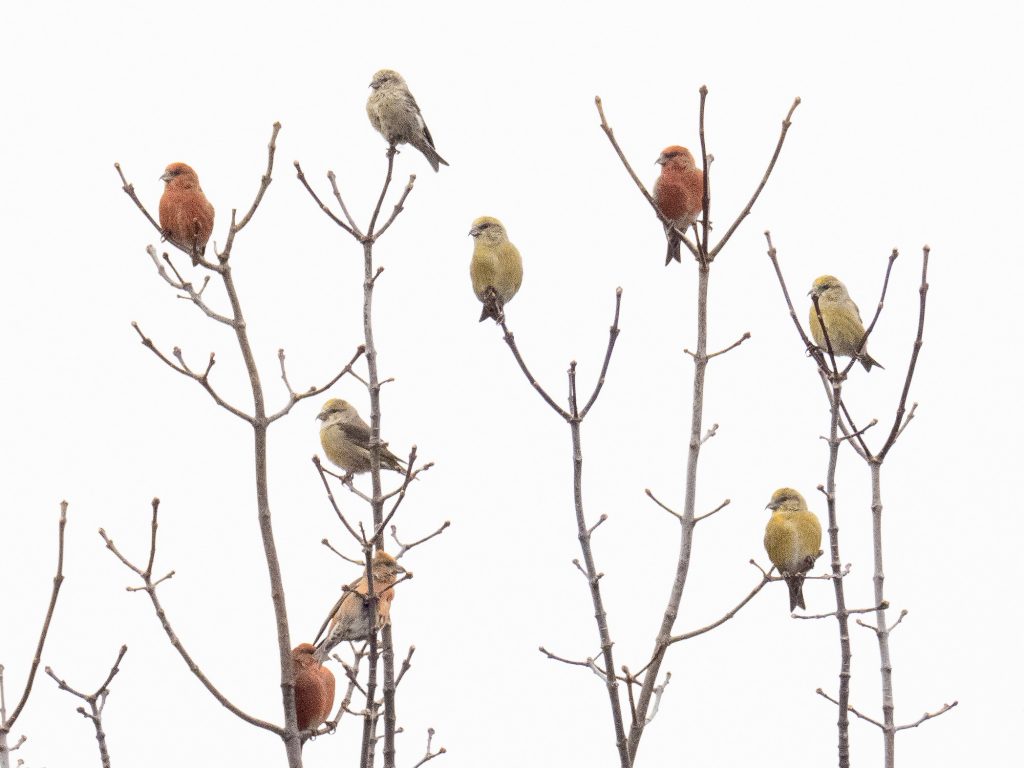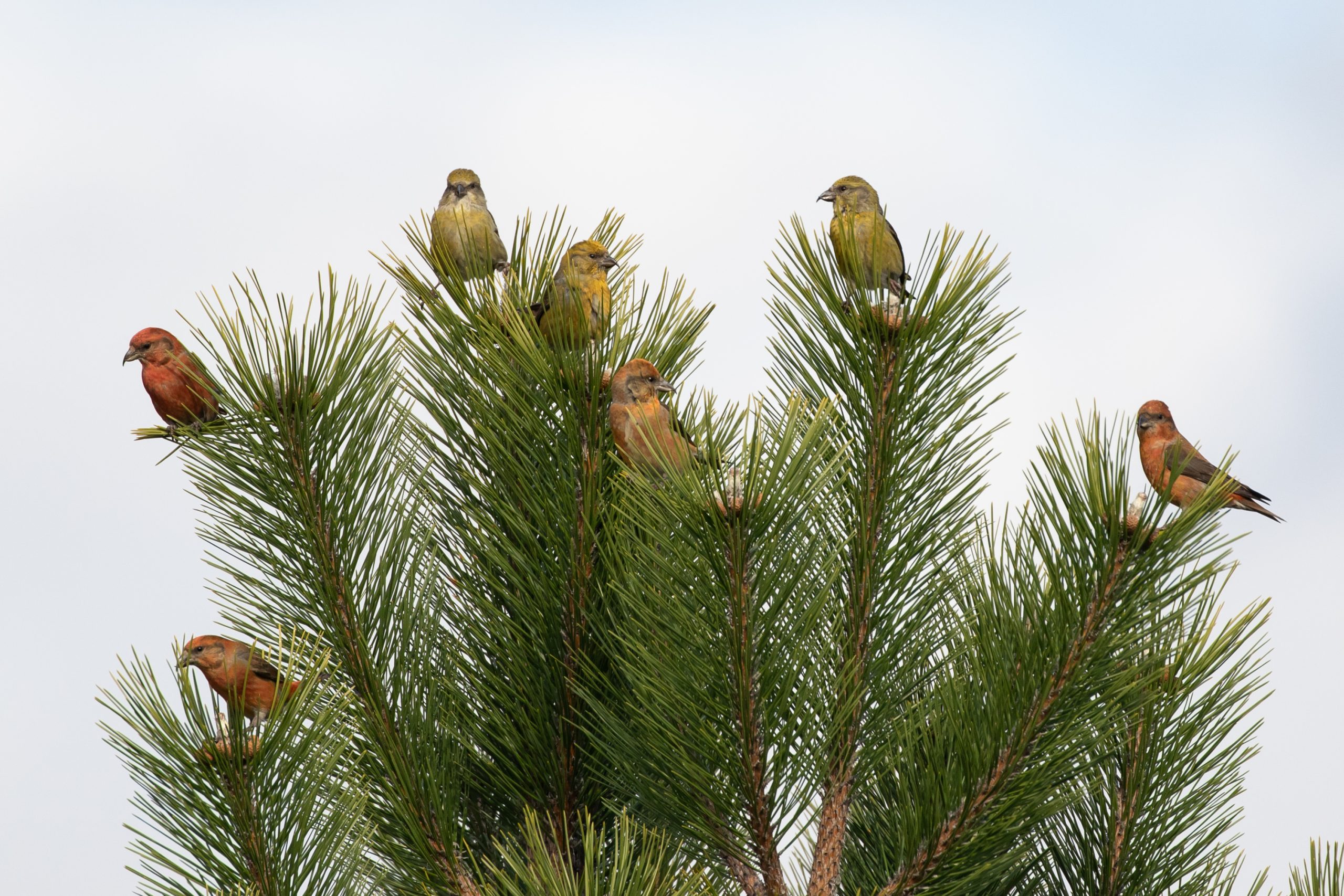By Ryan F. Mandelbaum and Matthew A. Young: There’s no “official” Christmas bird. You might see Christmas cards adorned with either Northern Cardinals or European Robins, solely due to their red color. So, why don’t we choose an official Christmas bird already, like the red crossbill? They’re red like cardinals and robins, they eat coniferous Christmas tree seeds, and according to medieval legend, crossbills injured their beak trying to pull the nails out of Jesus’s hands as he was nailed to the cross.
If you’re completely new here: red crossbills are nomadic kind of finch whose mandibles cross at the tips. The evolutionary purpose of this crossed beak is that crossbills are conifer cone specialists, who use their beaks like forceps to access the seeds inside of cones.

There is a much more colorful explanation for the beak of the finch, however. Zoologist Alpheus Hyatt Verrill recounts the legend for a children’s magazine Young Citizen in 1899:
The cold north wind whistled through the vines of the veranda and scattered the dried blue honeysuckle berries on the ground. Eric stood by the window watching the falling snow. “Oh, papa,” he cried suddenly, “come see these birds!”
Eric’s father laid down his book and went to the window. In the vines, and hopping about on the snow-covered ground, were a number of birds eating the berries and chattering to one another in low tones. Some of these birds were dull olive and yellow; others were dressed in brilliant red, their bright feathers showing like blood against the soft white snow.
“These are Crossbills, Eric,” said he, “and if you look at them you will see why they have such a queer name.”
Presently one of the pretty creatures came close and Eric called, “Oh, I see now—the bird’s bill is all twisted.”
Eric’s father laughed. “It is not twisted,” he said, “but the ends are bent past each other.”
“Well,” said Eric, “why are they like that, instead of straight?”
Eric’s father drew a chair to the window and took his little boy on his knee. “Crossbills,” he said, “live in the far north— they only visit here in winter. They feed on pine and fir seeds and use their scissor-like bills to chip off the scales of cones so as to reach the seeds beneath. When pine-cones are scarce, they come to the shrubbery near houses to feed on the berries. In their forest-home there are few people, and they are never harmed, so they are always tame and fearless of man.
“And there is a very pretty little legend, Eric, that tells how the Crossbills first came by their queer beaks and red feathers.
When Christ was taken out to be crucified all the birds and animals were grieved, but only one, a plain little brown bird, tried to help Him. This little bird stayed near the Cross, and when the cruel nails were driven through the Saviour’s hands he fluttered down and tugged and pulled to draw them out. But though he struggled until his little bill was bent out of shape, and his feathers dyed with the Lord’s blood, he failed to start the nails. But Christ saw his efforts and smiled and thanked him. And ever since, says the legend, the bird’s feathers have been red and its bill crossed.
By context alone, red crossbills would make the ideal Christmas bird. They’re red like cardinals, and many of us are more likely to see them in the wintertime during the Christmas season when they undertake southward irruptions. They have a mystique and specialness to them, and seeing them in nature is often a unique event for most birders. And they’re probably the most likely bird to find in a Christmas tree. Popular Christmas tree species like Douglas-fir, Norway and blue spruce, eastern white pine, and Scotch pine are all typical food sources for the red crossbill. Crossbills are sort of like nature’s own Christmas tree ornaments.

Given their tendency to flock and vocalize to each other to maintain flock cohesion and unity, and for males to feed females, they’re a symbol of family, gift-giving, and togetherness. Whether you prefer this more scientific message about the crossbill, or the more religious story, both signify a message of coming together, at least in mind and spirit given these COVID times. And there’s no better of a message to spread around this time of year or any time of the year – It would make a perfect Christmas bird!

This legend was authored by Longfellow, which was inspired from text read in a Julius Mosen book. Was created and published as music by Henry Sheppard Oneonta, NY.
by Longfellow 1807
THE LEGEND OF THE CROSSBILL
On the cross the dying Saviour
Heavenward lifts his eyelids calm,
Feels, but scarcely feels, a trembling
in his pierced and bleeding palm.
And by all the world forsaken,
Sees he how with zealous care
At the ruthless nail of iron
A little bird is striving there.
Stained with blood and never tiring,
With its beak it doth not cease,
From the cross it would free the Saviour,
Its Creator’s son release.
And the Saviour speaks in mildness:
“Blest be thou of all the good
Bear, as token of this moment,
Marks of blood and holy rood!”
And that bird is called the Crossbill,
Covered all with blood so clear,
In the groves of pine it singeth,
Songs, like legends, strange to hear.
So we say it’s about time we adopt red crossbills as the official bird of Christmas and decorate our Christmas trees with these scientifically accurate and religiously relevant tree ornaments. At very least it’s a bird of peace and unity, ad perhaps one day someone will even make an ugly sweater with crossbills on them.
Merry Christmas everyone!


FiRN is a nonprofit, and has been granted 501c3 status. FiRN is committed to researching and protecting these birds and other threatened finch species like the Evening Grosbeak and Rosy-finches, and if you have been enjoying all the blogs and identifying of Red Crossbill call types, redpoll subspecies and green morph Pine Siskins FiRN has helped with, please think about supporting our efforts and making a small donation at the donate link below.

